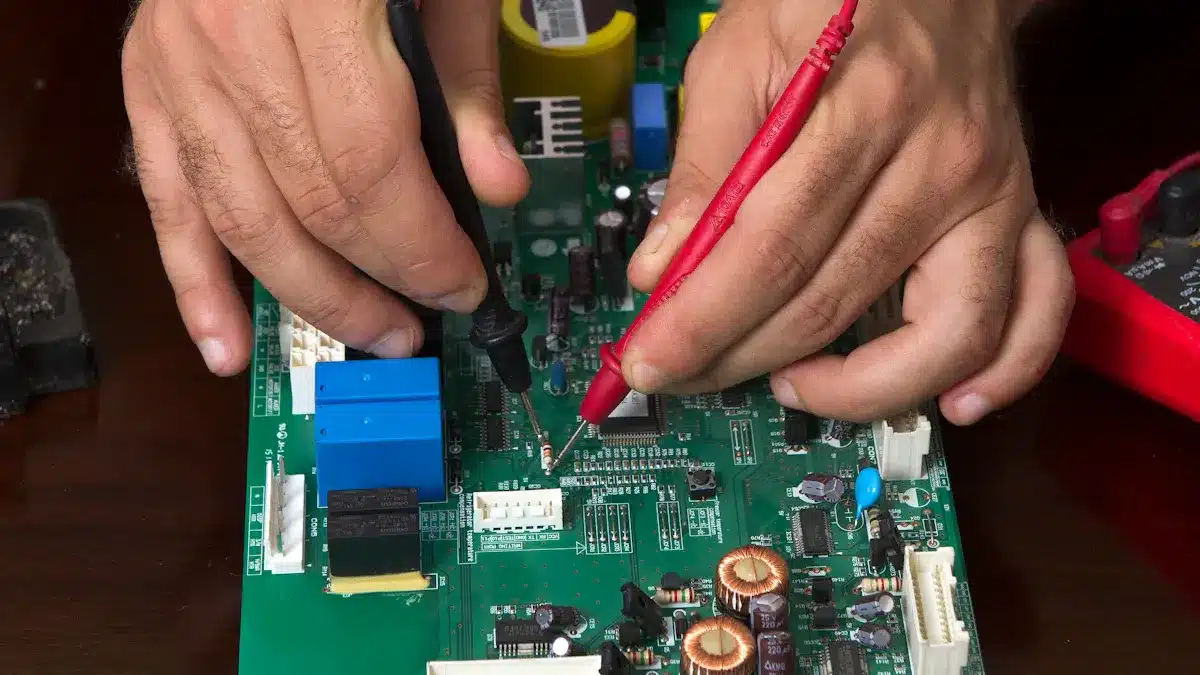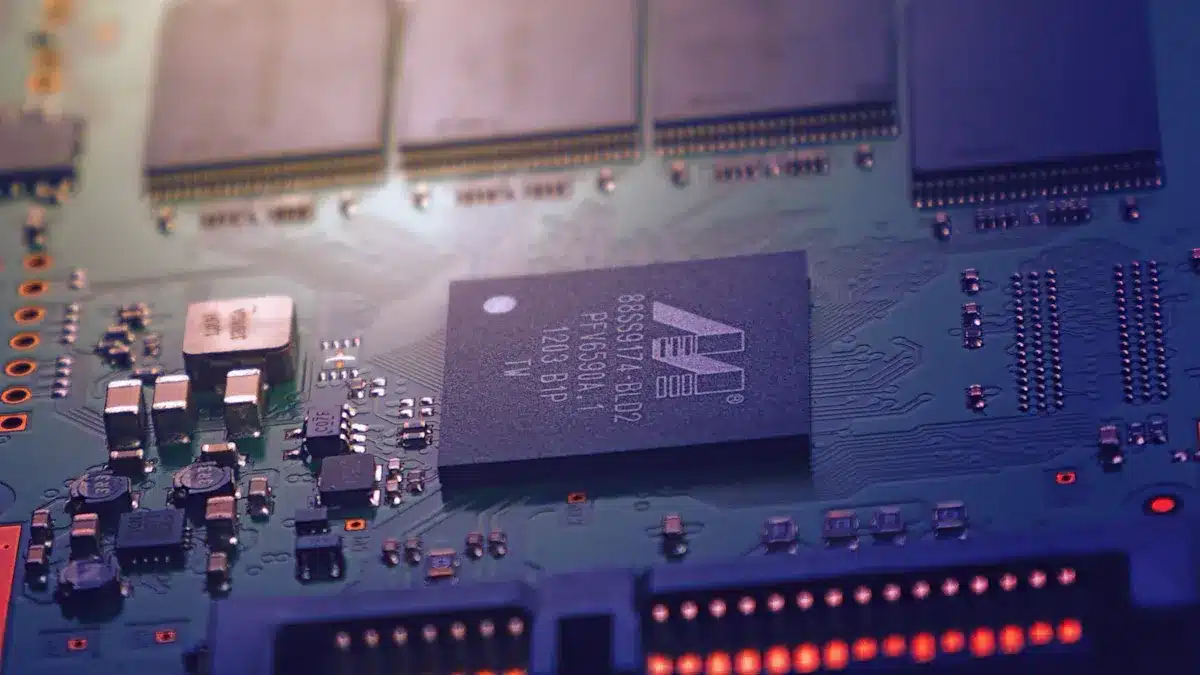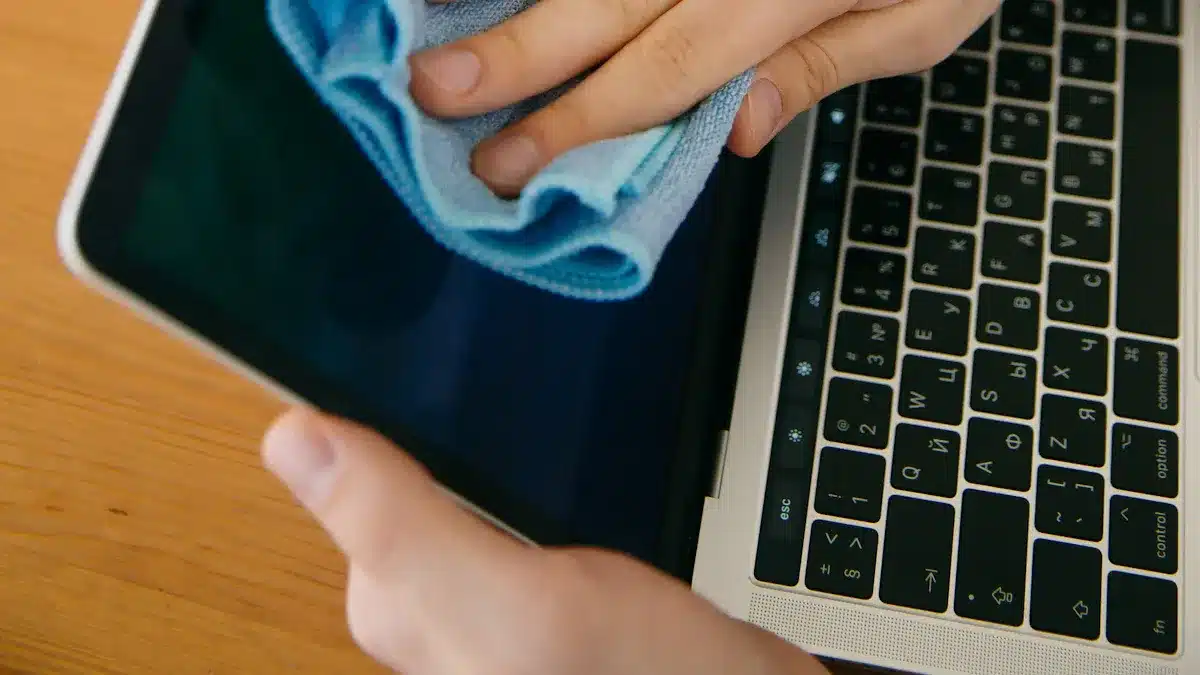
Keeping your circuit boards clean is very important. It helps them work well and last longer. Common dirt like dust, oils, and leftover materials can cause big problems. For example, oils from fingerprints and wet solder can mess up electrical connections. Good cleaning methods, like using a circuit board cleaner, can help you keep your boards in great shape.
Key Takeaways
Clean your circuit boards often. This stops dust and dirt from building up. It helps prevent overheating and electrical issues.
Use the right cleaning tools, like circuit board cleaners or isopropyl alcohol. These safely remove dirt without hurting the parts.
Keep circuit boards in moisture barrier bags. Make sure the area is stable. This lowers the chance of corrosion and damage.
Types of Contaminants

To keep your circuit boards clean, you need to know what can harm them. Here are the main types of contaminants to watch out for:
Dust and Debris
Dust and debris are common things that can build up on circuit boards. They come from many places, like:
Dead skin cells
Pollen
Insect waste and body parts
Mold spores
Microorganisms
Pollutants
Environmental particles
Hair and animal dander
Fabric fibers
Soil particles
Dust can block vents and cover heat sinks. This makes it hard for heat to escape, which can cause overheating and system crashes. When dust lands on circuit boards, it can create unwanted paths for electricity. This raises the chance of short circuits and electrical problems. Also, visible dust can block airflow, leading to overheating and part failure. To keep everything working well, you should clean dust off a PCB regularly.
Wet Substances
Wet substances, like water or spilled drinks, can cause big problems on circuit boards. When water touches circuit parts, it can cause rust and make electricity flow too easily. This can lead to short circuits and rust, which can cause failure if not fixed fast.
Moisture can also start chemical reactions between circuit board parts and things in the water. This can create unwanted connections between circuit parts, causing short circuits and damage. Common reasons for wet substance problems include:
Bad storage that causes moisture buildup
High heat that melts wax coatings and attracts dirt
Too much flux used during cleaning
To avoid damage, you need to quickly remove wet substances from a PCB.
Corrosion
Corrosion happens when metal parts on a circuit board react with moisture, pollutants, or other environmental things. Common metals in PCBs, like copper, can easily corrode. The types of corrosion that can affect circuit boards include:
Type of Corrosion | Description | Effects on Circuit Boards |
|---|---|---|
Atmospheric | Caused by environmental factors like humidity and pollutants. | Can lead to damage of metal parts. |
Localized | Affects a small area, includes filiform, crevice, and pitting corrosion. | Can cause small failures in connections. |
Galvanic | Happens when two different metals touch in the presence of an electrolyte. | Can speed up corrosion of one metal. |
Electrolytic | Caused by electric current going through a conductive solution. | Can harm circuit paths and parts. |
Fretting | Caused by tiny movements between surfaces, leading to wear and corrosion. | Can cause loss of connectivity. |
Intergranular | Happens along the grain boundaries of metals, often due to bad heat treatment. | Can weaken the structure of parts. |
Corrosion can happen fast in humid places. Studies show that areas with humidity over 60% greatly raise the risk of PCB failure. Without proper care, a PCB’s life can drop from years to just months. Knowing the types of corrosion is important for using good prevention methods.
By learning about these contaminants and their effects, you can take steps to keep your circuit boards clean and working well.
Cleaning Methods for Circuit Boards

To keep your circuit boards clean, you need to use the right methods and solutions. Here are some good cleaning techniques you can try:
Using a Circuit Board Cleaner
A circuit board cleaner is a special solution made to remove dirt without hurting the parts. When you use a commercial cleaner, do these steps:
Spray the PCB cleaner evenly on the dirty areas and wait a few seconds.
Use an anti-static brush or cotton swab to gently scrub.
Wipe the surface with a lint-free cloth to get rid of dirt and flux.
Use compressed air or a hot air gun to dry the board well.
Check the area with a magnifying glass for any leftover dirt or damage.
Tip: Always follow the manufacturer’s instructions for the cleaner you pick. This helps you use it safely and correctly.
How to Clean a Circuit Board with Isopropyl Alcohol
Isopropyl alcohol is another great choice for cleaning circuit boards. It removes dust, oils, and flux residues well. Here’s how to clean a circuit board with isopropyl alcohol:
Use isopropyl alcohol that is 90% or higher for the best cleaning.
Wear latex gloves and goggles, and work in a place with good air flow.
Dampen a cotton swab with the alcohol and gently scrub the dirty areas.
Let the alcohol evaporate, which should take less than an hour.
Using isopropyl alcohol helps stop moisture buildup, which can cause corrosion.
Ultrasonic Cleaning Techniques
Ultrasonic cleaning is a very effective way to clean circuit boards, especially for complex designs. This method uses high-frequency sound waves to create tiny bubbles in a cleaning solution. When these bubbles pop, they make shock waves that remove dirt from the board.
This method is great for getting rid of:
Flux residues
Oils
Other particles
Ultrasonic cleaning can reach small spaces that manual cleaning might miss. It reduces the chance of damaging delicate parts, making it a favorite for many experts.
Note: Always make sure the cleaning solution used in ultrasonic cleaning is safe for electronic parts to avoid damage.
By using these cleaning methods, you can keep your circuit boards working well and lasting longer. Regular cleaning not only stops dirt buildup but also helps you find problems before they get worse.
Preventive Measures
Keeping your circuit boards clean needs some smart steps. Here are some good ways to prevent dirt:
Proper Storage Techniques
You should keep your circuit boards in a clean place to stop dirt. Follow these tips for the best storage:
Store PCBs in moisture barrier bags with desiccants to soak up moisture.
Keep the temperature between 20-25°C and humidity at 30-50%.
Use vacuum packaging to remove air and moisture for long-term storage.
When you handle PCBs, always wear gloves or finger cots that don’t shed. This helps stop dirt from skin cells and hair. Following clean room rules helps control dust and particles in the air.
Regular Maintenance Routines
Regular maintenance is very important for keeping your circuit boards working well. Here’s an easy routine you can follow:
Power Off: Always turn off or unplug the device before cleaning.
Anti-Static Measures: Use an anti-static wrist strap to protect parts from static electricity.
Ventilation: Make sure there is good airflow when using cleaning products.
Proper Tools: Use compressed air, soft brushes, and isopropyl alcohol for cleaning.
Avoid Water: Never use just water, as it can cause rust and corrosion.
Gentle Cleaning Solutions: Use light pressure while cleaning to avoid damage.
Drying Time: Let the circuit board dry completely before putting it back together.
Regular checks help find early signs of dirt or corrosion. You should clean SMD PCBs as needed to stop problems and keep them reliable.
Environmental Considerations
Environmental factors can really affect how clean your circuit boards are. High humidity and chemicals can speed up damage. To reduce these risks, watch the temperature and humidity levels. Keep the conditions steady to stop condensation that could hurt the circuit boards.
Also, check seals for damage and change drying agents often to keep the area dry. By using these preventive measures, you can make your circuit boards last longer and work better.
Cleaning and taking care of your circuit boards is very important for them to work well. You can stop dust, dirt, and leftover materials from building up by using good cleaning methods. This not only helps your devices work better but also makes them last longer.
Use preventive steps like storing them correctly and checking them regularly. These actions help keep signals strong and lower the chance of short circuits. Make cleaning a regular part of your routine to keep your circuit boards in great shape.
FAQ
What causes circuit board corrosion?
Circuit board corrosion happens because of moisture, dirt, and environmental factors. These things react with metal parts and cause damage.
How can I clean a corroded circuit board?
To clean a corroded circuit board, use isopropyl alcohol and a soft brush. Make sure to dry it completely to stop more corrosion.
How often should I clean my circuit boards?
You should clean your circuit boards every few months or when you see dust or moisture. Regular cleaning helps prevent problems.
See Also
Essential Strategies for Enhancing PCB Assembly Productivity
The Importance of Cleanliness in PCBA for Dependability
Ten Professional Insights for Cost-Effective PCBA Assembly